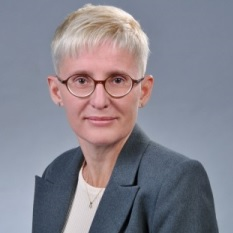Graphene and Other 2D Layered Based Nanomaterials for Energy Applications
A special issue of Nanomaterials (ISSN 2079-4991). This special issue belongs to the section "2D and Carbon Nanomaterials".
Deadline for manuscript submissions: closed (31 August 2023) | Viewed by 6673
Special Issue Editor
Interests: carbon nanomaterials and nanostructures; carbon nanotubes; material characterization; graphene; 2D materials; spectroscopy; nanocomposites; thin films; electronic structure
Special Issues, Collections and Topics in MDPI journals
Special Issue Information
Dear Colleagues,
During the last decades, the world-wide power consumption has grown almost 15-fold. The most intensely exploited primary power sources are petroleum (30%), coal (20%), natural gas (20%), and nuclear fuel (6%). This has caused the increase in the carbon dioxide release into the atmosphere 4.5 times during the last 50 years, which gives rise to considerable ecological problems. Besides that, the obtained estimates of the conventional energy source resources demonstrate that the oil and gas resources are hardly sufficient for 100 years. Thus, on the one hand, one of the basic problems of the modern power industry is to find alternative renewable power sources (e.g., hydrogen) and efficiently increase their share in the general power consumption. On the other hand, it is necessary to develop strategies for more efficient power storage, transmission, and conversion. This is of particular interest owing to active development of the Internet of Things solutions, which require designing innovative low-power machines, systems, and devices.
In this view, graphene and other 2D Layered based nanomaterials that are characterized by unique atomic and electronic structures offer a broadest diversity of solutions and strategies in the field of energy applications. Chemical and physical properties of these materials may be efficiently designed, engineered and tuned for each specific energy application by using the controllable synthesis procedure, structure modification by chemical and physical methods, introducing impurities or creating defects, and also by combining them in hybrid structures.
The area of interest of the Special Issue is very broad. We expect contributions on the following topics:
- 2D materials
- layered materials
- 2D carbon-based nanocomposite and nanostructures
- graphene and graphene derivatives (GO, rGO, etc.)
- carbon nanotubes and their derivatives
- carbon nanofibers
- 2D layered hybrid nanomaterial-based films
- transition metal dichalcogenides (MX2)
- WS2
- MoS2
- transition metal carbides
- transition metal nitrides
- transition metal carbonitrides (MXenes)
- silicene
- germanene
- stanene
- van der Waals heterostructures
- interfaces
- 2D layered-based composites
Dr. Maria Brzhezinskaya
Guest Editor
Manuscript Submission Information
Manuscripts should be submitted online at www.mdpi.com by registering and logging in to this website. Once you are registered, click here to go to the submission form. Manuscripts can be submitted until the deadline. All submissions that pass pre-check are peer-reviewed. Accepted papers will be published continuously in the journal (as soon as accepted) and will be listed together on the special issue website. Research articles, review articles as well as short communications are invited. For planned papers, a title and short abstract (about 100 words) can be sent to the Editorial Office for announcement on this website.
Submitted manuscripts should not have been published previously, nor be under consideration for publication elsewhere (except conference proceedings papers). All manuscripts are thoroughly refereed through a single-blind peer-review process. A guide for authors and other relevant information for submission of manuscripts is available on the Instructions for Authors page. Nanomaterials is an international peer-reviewed open access semimonthly journal published by MDPI.
Please visit the Instructions for Authors page before submitting a manuscript. The Article Processing Charge (APC) for publication in this open access journal is 2900 CHF (Swiss Francs). Submitted papers should be well formatted and use good English. Authors may use MDPI's English editing service prior to publication or during author revisions.
Keywords
- Graphene
- Graphene derivatives, functionalization Carbon nanotubes and nanofibers
- 2D materials
- 2D carbon-based nanomaterials
- Van der Waals heterostructures
- 2D layered hybrid nanomaterial
- Energy storage
- Energy conversion






